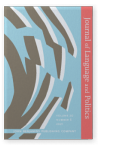Vol. 20:6 (2021) ► pp.932–953
US-China trade negotiation discourses in the press
A corpus-driven critical discourse study
This article studies trade negotiation discourses during the US-China tariff truce, aiming at investigating the difference of ideologies of the U.S. and China journalists towards trade negotiation. Through integration of theories and methods of corpus linguistics and critical discourse studies and the use of the corpus linguistic software, the study finds that U.S. reports to some extent make itself appear as a victim of the trade, and hope to end unfair trade practices and reduce the chronic trade deficit, while China press focuses more on the harm of raising tariffs not just to each other but the global economy, through communication and dialogue rather than unilateral measures to peacefully resolve trade tensions. Perceived differences in culture have an important influence in the theoretical formation of the differences. The article concludes that the discourse patterns of the coverage imply a rising China and a new level of equilibrium in international politics.
Article outline
- 1.Introduction
- 2.CDS with a sociocognitive approach
- 3.CDS and CL in media discourse studies
- 4.Methodology
- 5.Discussion and finding
- 5.1The most frequently words
- 5.2The most frequently keywords
- 5.3The collocates of “trade”
- 5.4Clusters
- 6.Conclusion
-
References
